The music of DOOM (2016) and DOOM Eternal can be called one of the most successful implementations of adaptive soundtrack in games. What does it represent, and why do dynamic musical landscapes deepen the gaming experience? Let's break it down.
What is adaptive music
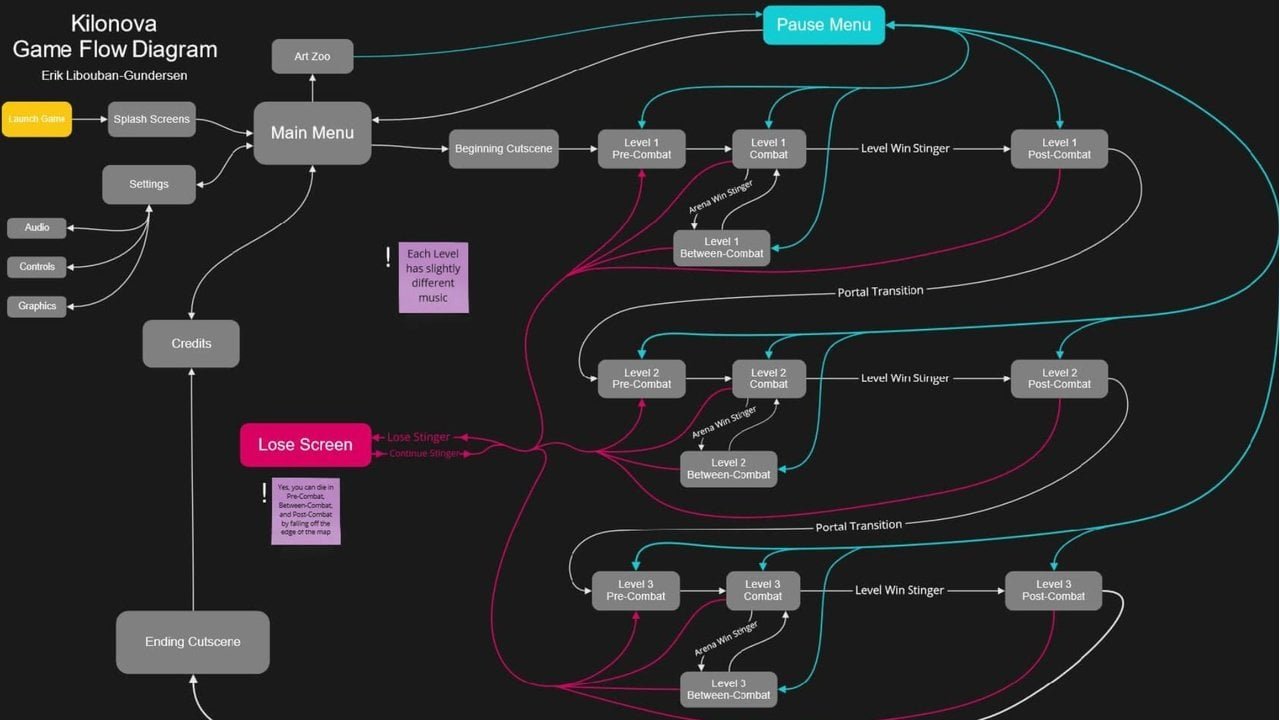 Source: digipen.edu / How adaptive music works
Source: digipen.edu / How adaptive music works
Also called dynamic music, it can adapt to game events in real time. Instead of static repetition of the same compositions, the audio engine generates a new musical picture for each situation.
Adaptive music can be imagined as a system of musical modes. When the player is simply exploring the world, calm, atmospheric music plays. But as soon as they notice an enemy and approach it, another phase kicks in, where the music becomes more dynamic and its tension intensifies.
How this affects gameplay
The effect is explained by the peculiarities of human perception. The brain reacts more actively to the harmonious combination of visual and audio stimuli, creating a synergy effect. This is exactly what led to a 40% increase in emotional response among gamers.
Sometimes the music hints that an enemy is nearby, or that you've approached your goal. This works subtly, without distraction, but adding the feeling that the world reacts to your actions, as if hinting at what will happen next.
Mick Gordon's role in the DOOM reboot
What did the composer give to id Software? The necessary drive. Mick used a blend of industrial, electronic, synthwave, djent, classic metal, dark ambient, noise elements and more. id Software's technical brief was challenging — to 'simply' create music that no one had ever heard before, but he succeeded.
Gordon drew inspiration from the very concept of Argent Energy — UAC technology that uses Hell's forces as a power source. Imagine that all of humanity's infrastructure runs on demonic energy. This dark technogenic symbiosis gave birth to the recognizable sound aesthetic.
The composer experimented with intentional distortion of audio signals. The result of this approach was a new and unique sound palette, where every note makes it clear that technology runs on infernal fuel.
Mick Gordon actively used his own guitar recordings (including nine-string guitar) and complex sound design techniques. Although initially one of the conditions for working on DOOM (2016) was a ban on using guitars.
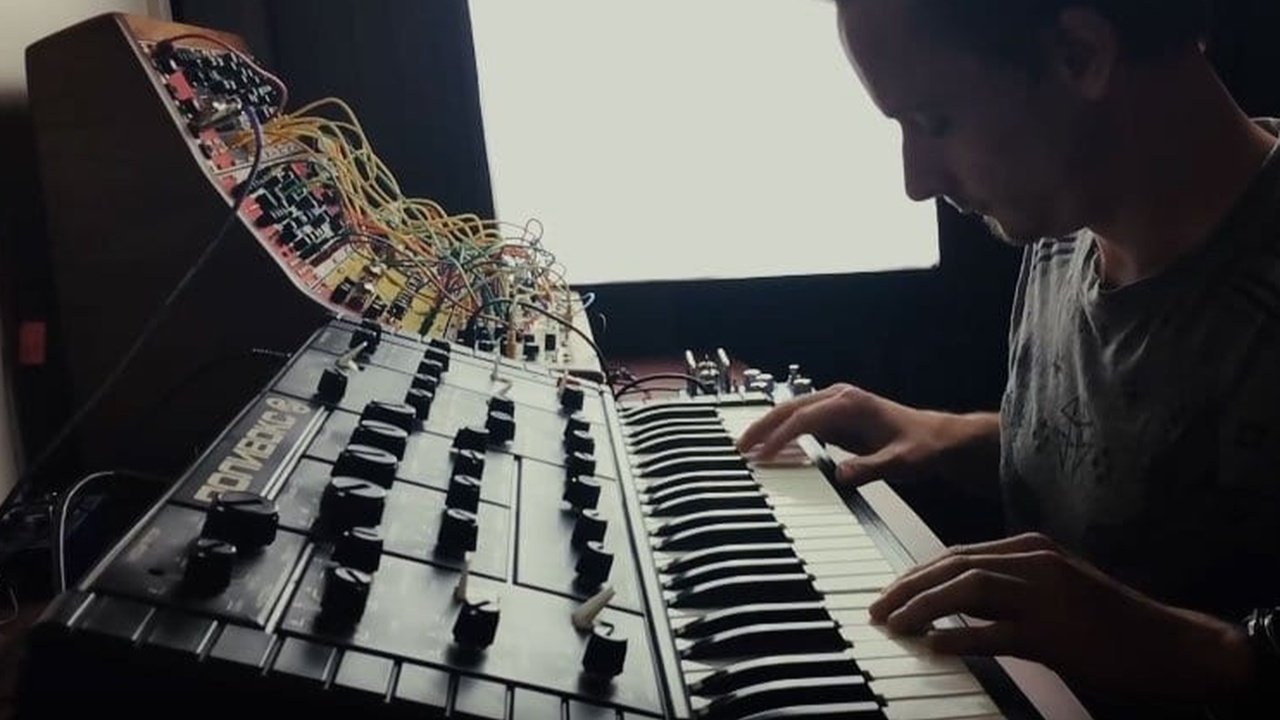 Source: gearnews.com / At work
Source: gearnews.com / At work
For the first six to nine months, he used only synthesizers. But after some time, Gordon began gradually promoting the idea of using guitars more often. He suggested adding five percent guitars to the overall mix, and id Software management liked it.
'Then those five percent turned into ten percent. Then they turned into fifteen percent. Just like when you go out somewhere for the night with friends, trying not to get too drunk, and it turns into a full-blown bender' — writes Mick.
Ultimately, the composer convinced the id Software team to allow unlimited use of guitars in recording. There were more guitar parts, and the tunings used became lower. Now heavy riffs became the central element of the soundtrack.
How adaptive music works in DOOM
Instead of simply playing pre-recorded tracks, DOOM uses a modular system. The soundtrack consists of multiple layers and audio loops that are combined on the fly. Stems are separate musical tracks, for example:
- Drums;
- Bass;
- Synthesizers;
- Guitars;
- Orchestral inserts.
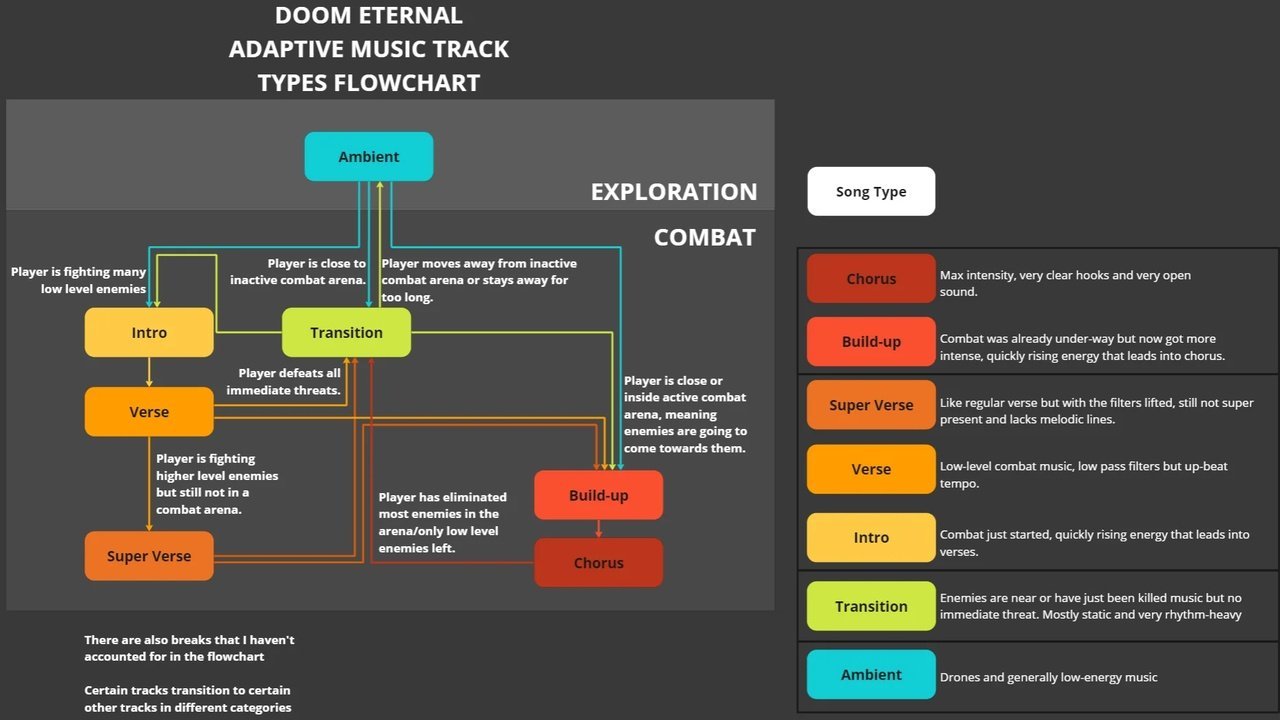 Source: reddit.com / Adaptive music workflow diagram using DOOM Eternal as an example
Source: reddit.com / Adaptive music workflow diagram using DOOM Eternal as an example
Behavioral scripts are also used. The engine checks what's happening in combat, analyzing several parameters:
- How many enemies are nearby;
- How aggressive the player is;
- What weapon they're using;
- Whether they're taking damage.
Here, the transition system between fragments is important. Middleware software like Wwise or FMOD Studio is used to create musical landscapes. The program allows switching intensity levels without audible seams. Music doesn't just change from level to level, it reacts to the playing style.
All fragments are written in the same key and tempo (often 120–140 BPM), which allows smooth 'stitching' of music in real time. Each sound landscape has several levels or layers, and the audio engine is responsible for their distribution.
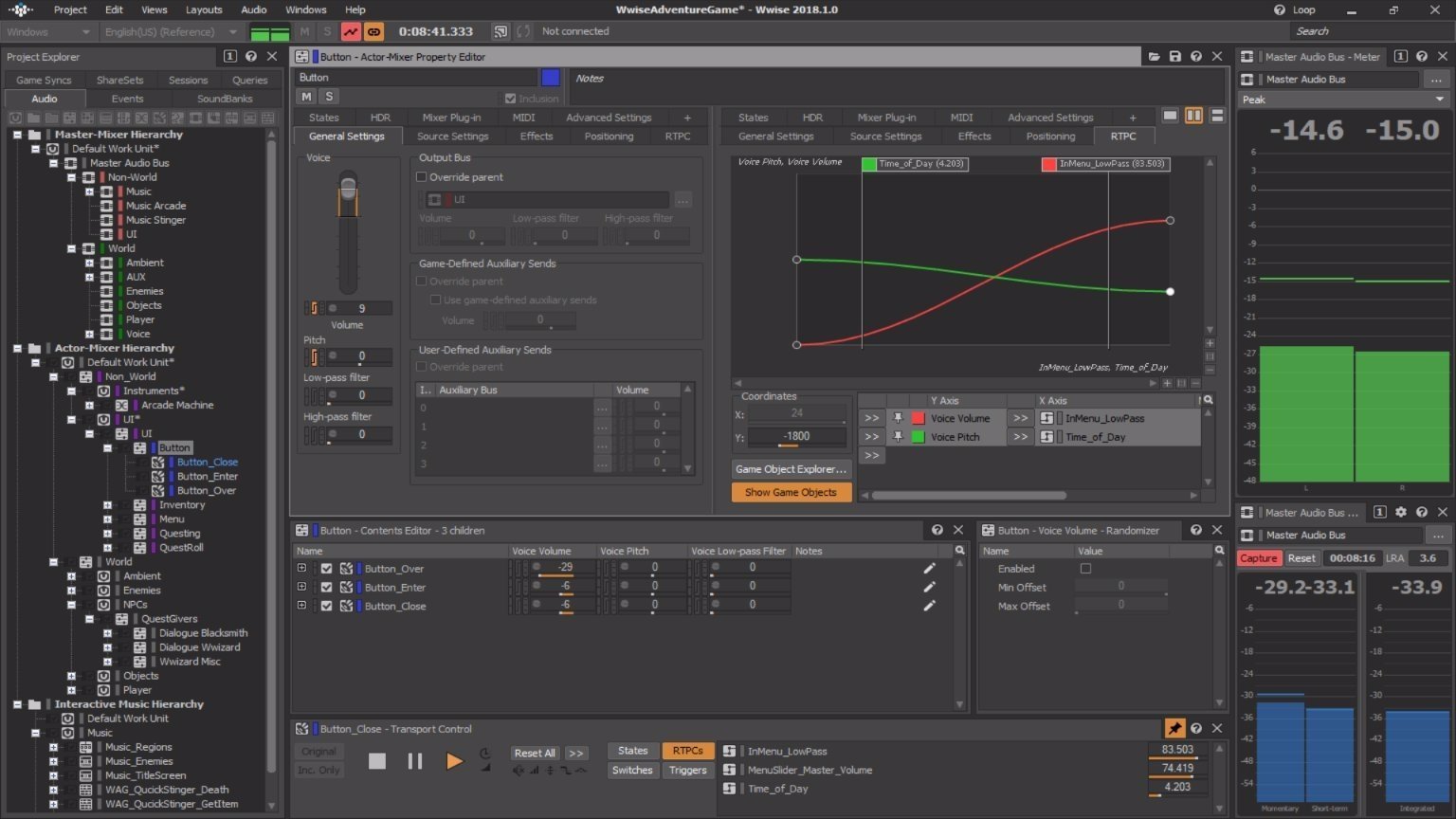 Source: blog.blips.fm / Wwise program interface
Source: blog.blips.fm / Wwise program interface
Ambient Layer. Quiet, dark and gloomy sounds that create background for exploring levels without combat. Here there are minimal drums, emphasis on synthesizers and atmospheric drones.
Light Combat Layer. Guitars, drums and simple melodic elements are added. The music becomes more rhythmic, but not yet too aggressive.
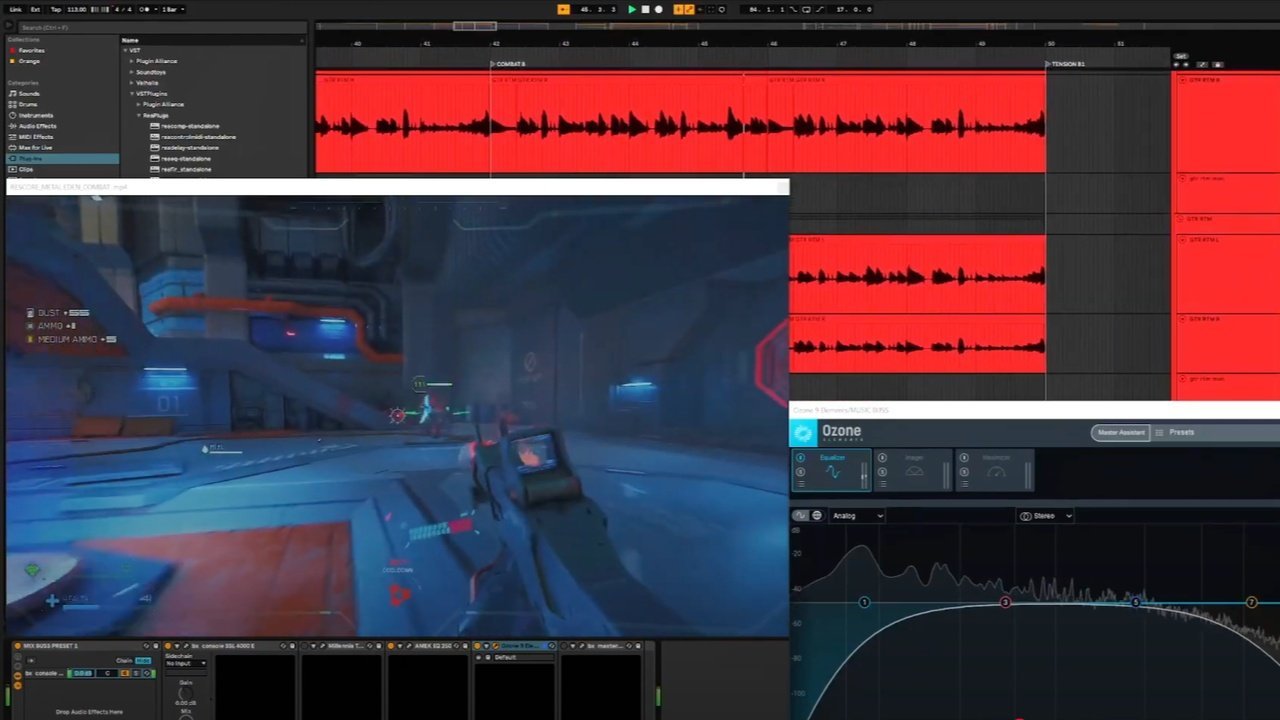 Source: youtube.com / Working with sound in Ableton Live
Source: youtube.com / Working with sound in Ableton Live
Medium Combat Layer. More saturated guitar riffs, bass, more aggressive drums come in. Intensity grows, the characteristic 'metal' sound begins to manifest.
Heavy Combat Layer. Maximally aggressive and dense guitar parts, fast drums, additional effects and noise. This layer sounds during fierce battles with large numbers of enemies.
Boss Combat Layer. More complex melodies, additional vocal inserts, unusual musical instruments (for example, bone flute, yes, that was also used)
Percussion in such games has special significance. The drums contain the same power and aggression as the main character's actions. When you're in the thick of things, it's important not to lose rhythm. Music forms this rhythm — with a clear, almost floating groove that becomes the engine of what's happening. It's the drums that give what's happening on screen its impulse.
DOOM without Mick Gordon
The composer ended his collaboration with id Software after a conflict that arose during work on the DOOM Eternal soundtrack. According to Gordon, he faced payment delays, lack of control over final mixing, and use of his music without appropriate compensation.
id Software used almost all the material he created, including demos and drafts, although they only paid for half. Mick was removed from the official soundtrack creation process, and Chad Mossholder handled the mixing instead. Gordon also stated that he didn't leave the project voluntarily, but left due to toxic communication from id Software management. He didn't work on the DOOM Eternal DLC.
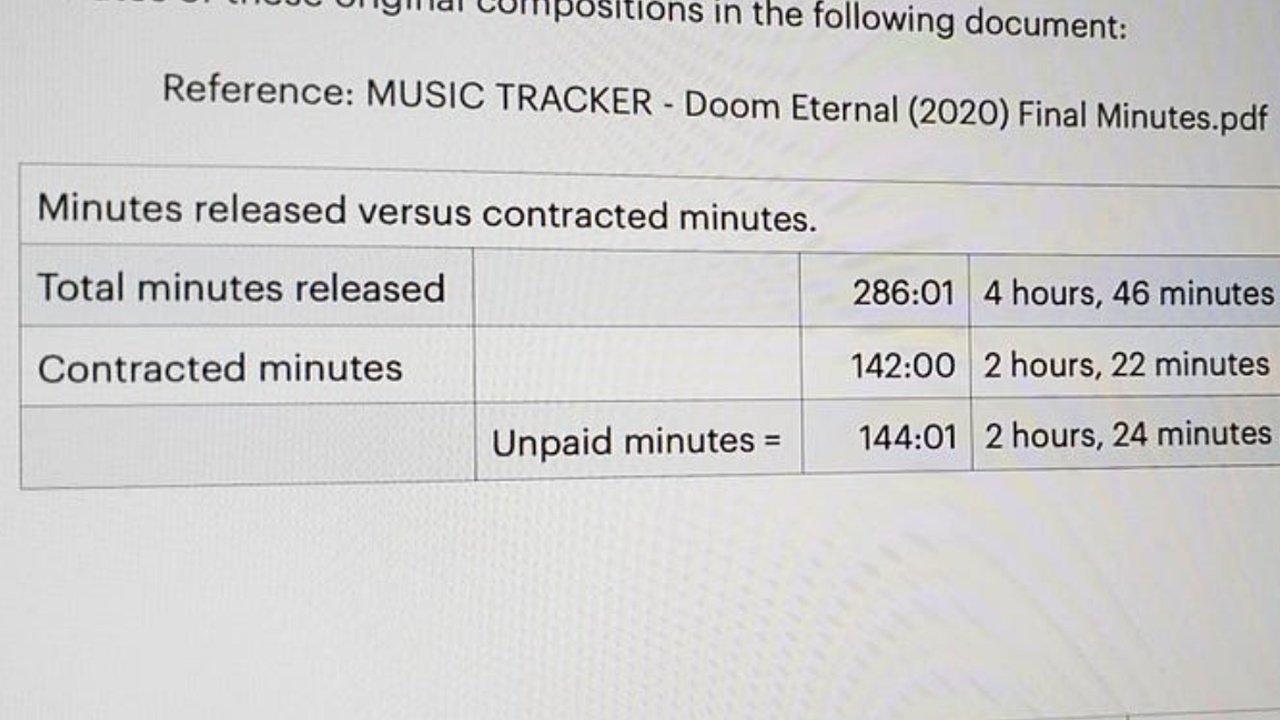 Source: scribe.rip / Document confirming that id Software paid for two and a half hours of music, although they used five hours of recorded materials in the game
Source: scribe.rip / Document confirming that id Software paid for two and a half hours of music, although they used five hours of recorded materials in the game
Andrew Hulshult and David Levy became the composers of The Ancient Gods DLC soundtrack. They were brought to the project after the collaboration with Mick Gordon ended. And although they did quality work, many fans noticed that the music in the DLC is inferior to the original OST.
The Ancient Gods soundtrack is perceived as less experimental and aggressive compared to the original. There's no recognizable style here and it lacks Gordon's characteristic elements — signature guitar riffs and dense textures. Some players believe that the music here poorly conveys the atmosphere and tension characteristic of the DOOM duology.
Mick didn't participate in creating music for DOOM: The Dark Ages either. The duo Finishing Move, who previously worked on Halo 2 Anniversary and Borderlands 3, became responsible for the next soundtrack. But some critics note that it's inferior in expressiveness to Gordon's works.
The soundtrack became different. Guitars still play a big role in it, but now they don't sound 'industrial.' There are fewer synthesizers and sound beds, instead there are more orchestral parts. Is this bad? No, it's just different.
What Mick Gordon is doing now
After finishing work on DOOM Eternal, Mick Gordon continued his path not only as a composer, but also as a music producer. In the gaming industry, he also participated in creating the soundtrack for Atomic Heart from Mundfish studio.
Other projects:
- Collaborative work on the track Parasite Eve for Bring Me the Horizon;
- Participation in creating songs Merchant of the Void and Slum Planet for 3TEETH;
- Collaborative work on the album In Stasis for Monuments.
Conclusion
Mick Gordon turned the DOOM soundtrack into a real powder keg. It's impossible to sit still to this OST, the drum parts in some compositions accelerate not only the gameplay, but also the desire to suddenly start headbanging to the music, just like before the Arachnotron appears on the Hell on Earth level in DOOM Eternal.
The composer managed to bring together several genres, from industrial to noise and drone. He literally set a new standard for heavy music in games, while creating a new trend for what a combat shooter soundtrack should be. That's why we love him.
Header photo: Anselmojackson.com
Read also

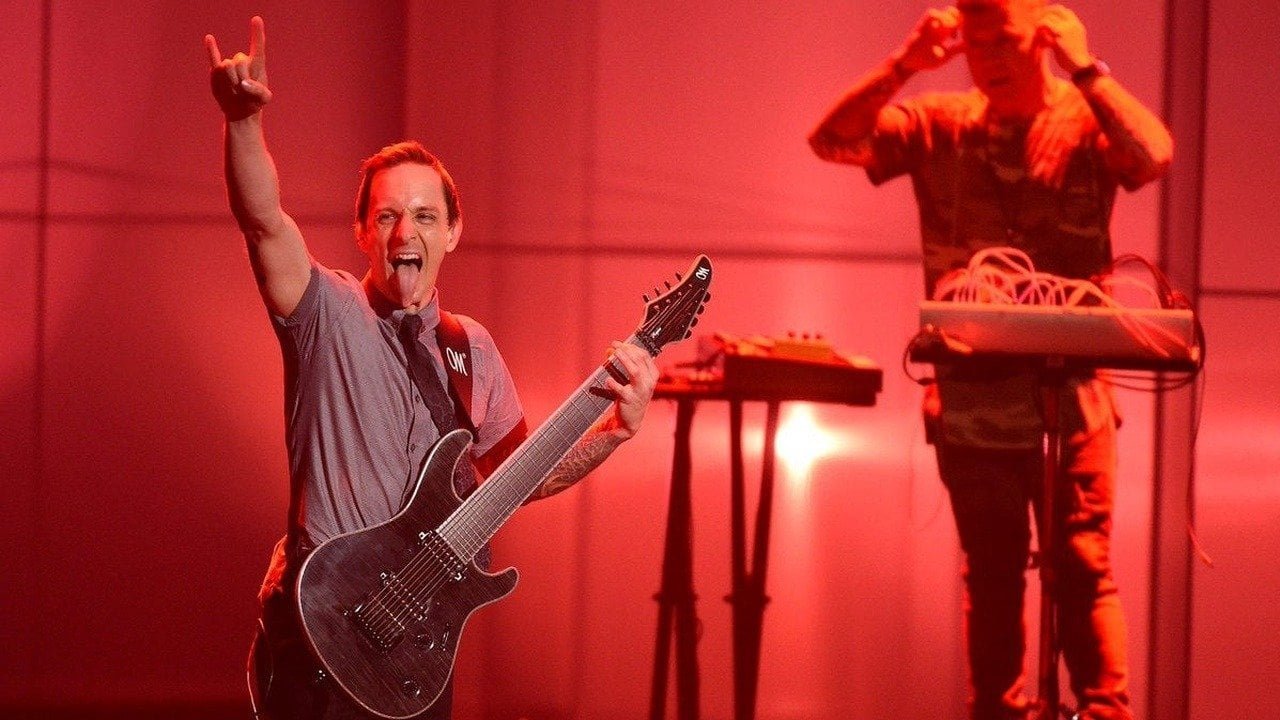
 Alexey "Alexi Emerald" Proschaylo
Alexey "Alexi Emerald" Proschaylo
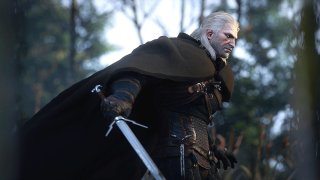




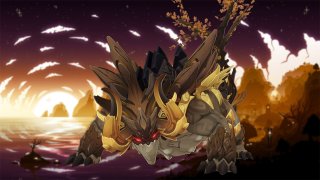
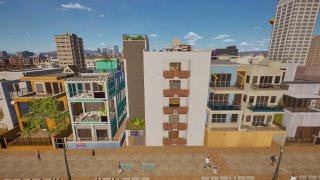


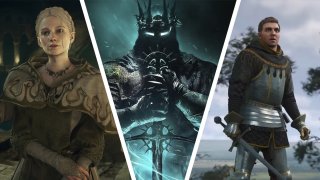







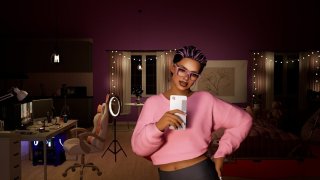
0 comments